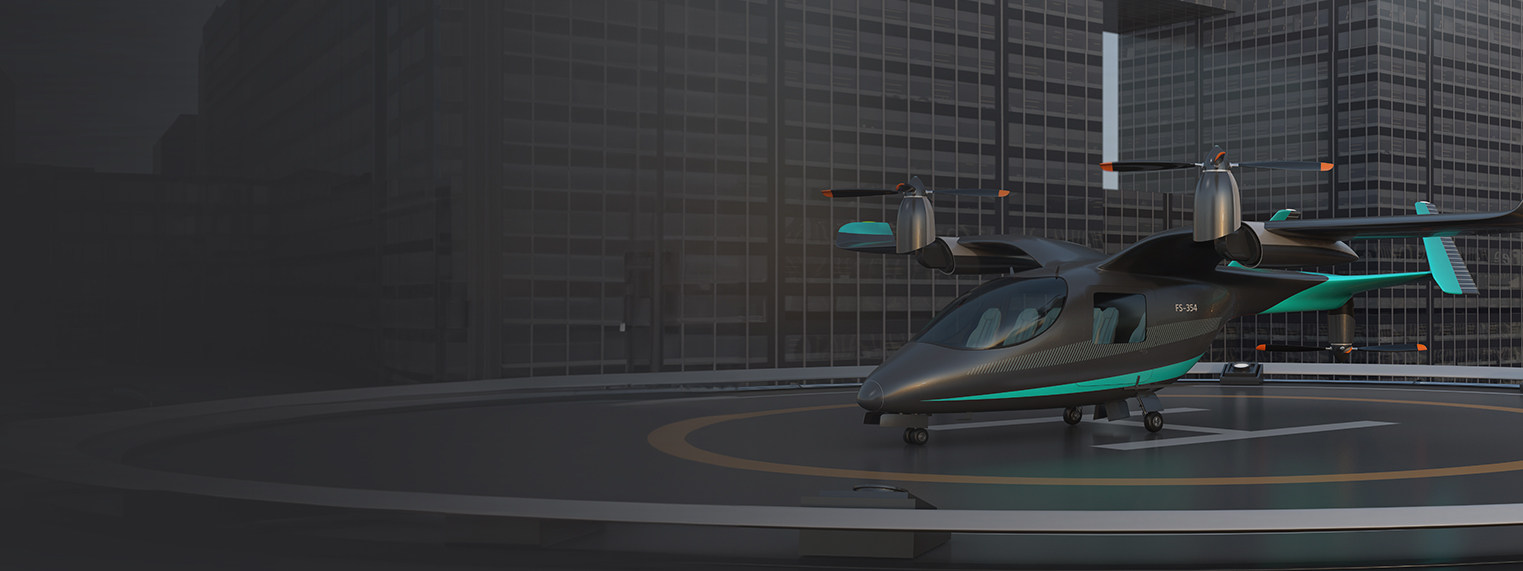
Changing Economy of Scale for Urban Air Mobility
The growth of any economy depends on the advancement in mobility and support infrastructure. Most developed countries have a robust mobility ecosystem, whether roadways, waterways, or air transportation. Looking at the current population growth rate, countries are looking for new options to reduce the traffic in the urban setup. The concept of urban air mobility has always been considered a viable substitute to ease the strain on the existing mobility infrastructure and meet the needs of the urban population.
With the development of lightweight aerostructure and advanced battery systems, the growth of urban air mobility is creating potential opportunities for companies and service providers. Urban air mobility creates more efficient and sustainable urban mobility ecosystem opportunities. As the economy of scale comes into consideration, the growth and success of urban air mobility depend on using it for daily commutes. The service providers looking to provide UAM services are already taking measures to reduce the cost of pre-trip compared to other means of transportation.
The potential for urban air mobility in countries that have a growing economy but don’t have the conventional infrastructure in place is high, as those countries can utilize urban air mobility as part of the transportation and can capitalize on the economic growth with less investment as compared to the conventional mode of transportations. Again, those countries will need to realize the potential of urban air mobility to act quickly and invest in both the support infrastructure and platform network for future operation.
Technological Advancement and the Wheel of Misfortune for Urban Air Mobility
eVTOL platforms play a vital role in urban air mobility, as most companies in this ecosystem are looking to provide tailor-made eVTOL platforms for urban air mobility applications. The companies are looking to give a unique spin to their platform to gain a competitive advantage over the other. Regarding technological advancements, close to 45 platform designs have been proposed or tested for serial production. However, out of those 45 design concepts, only 4 were able to move for serial manufacturing, which brings us to less than 9% of the success rate for the design concept of those platforms. Those VTOL platforms mainly use the conventional fuel system and are used majorly for military applications.
One major player in the field is Airbus, which is exploring a sustainable alternative for commercial aviation and urban air mobility. With the amount of resources that Airbus has regarding R&D capabilities and decades of experience in designing and developing commercial aircraft, the company is making noticeable advancements in developing the eVTOL platform. For example, in March 2024, Airbus presented its fully electric CityAirbus NextGen prototype. The two-tonne platform will operate on the eight propellers that electric motors will power. The platform is designed to achieve an 80-km operational range and a max speed of 120 Km/hour, making it a perfect choice for urban air mobility operations.
Figure 1: Urban Air Mobility Market, By Mobility Type, 2024
Pros and Cons of Urban Air Mobility as Compared to Traditional Transportation
As urban air mobility technology continues to evolve and the UAM ecosystem expands, it is bound to have a comparison with the conventional mode of transportation. Compared to conventional urban air mobility, traditional transportation requires extensive investment in the supporting infrastructure and would take a longer timeline to develop. Take an example of ground transportation specific to the roadways; the amount of time to create an entire road infrastructure is higher than in terms of both timeframe and economy; on the other hand, if we are looking to develop a vertiport to support urban air mobility, it would be much quicker and economical.
Specific companies are developing support infrastructure such as vertiports, remote towers, and digital towers to support the urban air mobility ecosystem. Companies like UrbanV SpA and Lilium, a leading urban air mobility value chain player, partnered to advance the support infrastructure in 2023. Under this partnership, UrbanV SpA will develop vertiport infrastructure, allowing eVTOL networks for Lilium aircraft and clients, with an initial focus on Italy and Franch Riviera.
Outlook of the Urban Air Mobility Market
With the development of eVTOL and support infrastructure such as vertiport, urban air mobility is poised to enter the commercial market in the coming years. The growth of urban air mobility depends on how this service can be scaled up and used by the public for regular commutes. The companies operating in this ecosystem must look at compact alternative designs that provide more ROI to the end users. Currently, most developed or prototype platforms have a higher price tag. To maintain the economy of scale and achieve the serial production of the platform, manufacturers need to combine the existing infrastructure and design to increase the reach of urban air mobility into the daily lives of people across the globe.
Author Details
|
Nilopal Ojha
(Assistant Manager), Aerospace & Defense Practice
|
Nilopal has nearly ten years of research and consulting experience and has helped multiple companies with actionable insights into the Urban Air Mobility ecosystem, Unmanned Systems, Network Planning and Analytical Solutions, Space Solutions, Unmanned ecosystems, and Space Propulsion infrastructure. |
80% of the Forbes Global 2000 B2B companies rely on MarketsandMarkets to identify growth opportunities in emerging technologies and use cases that will have a positive revenue impact.
- Leading Automated Guided Vehicle Companies 2024: An In-depth Analysis
- CHARGED UP: SHIFT TO E-MOBILITY AND THE EVOLUTION OF TRANSPORTATION
- Global Automotive Market: Predictions For 2024
- Revolutionizing Depot Charging: Hockey Stick Growth on the Cards
- The Future of Silicon Battery Industry: Innovations and Market Outlook


